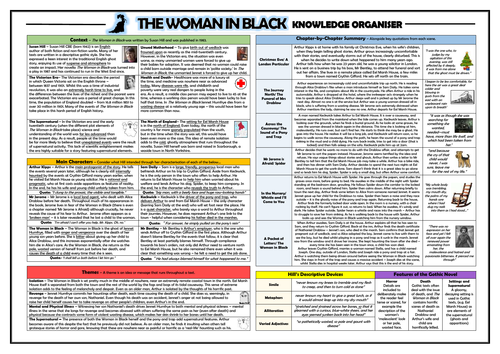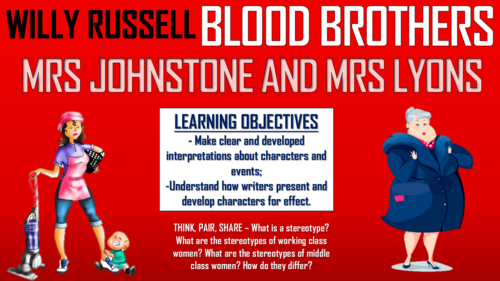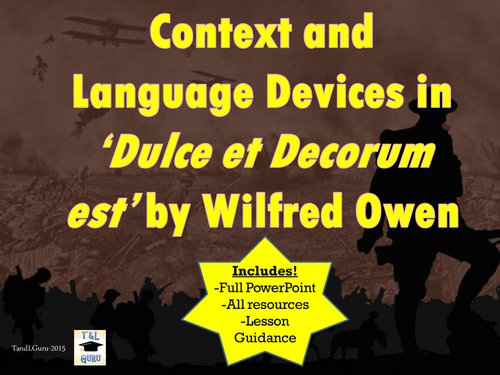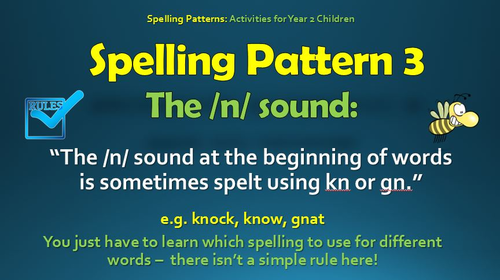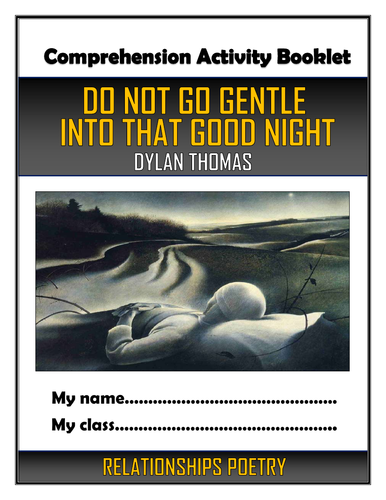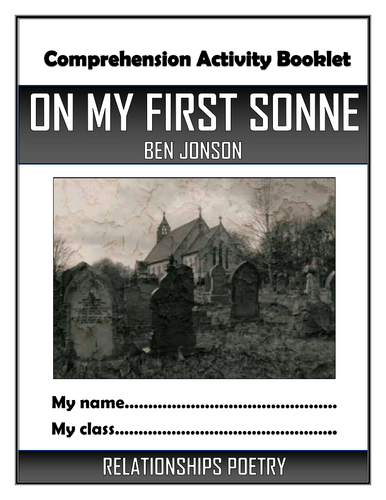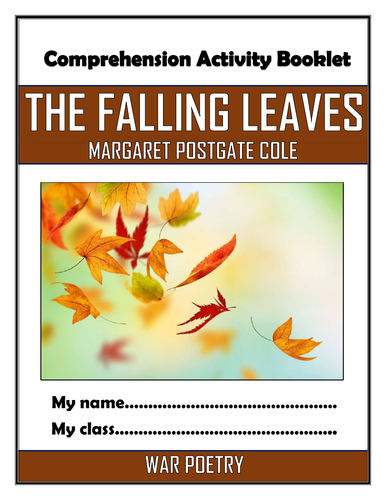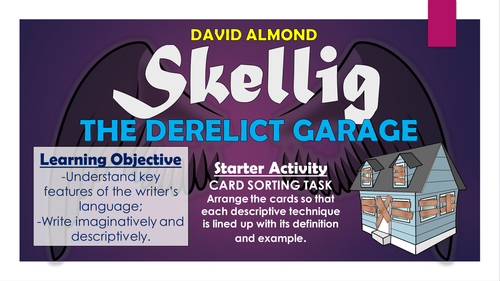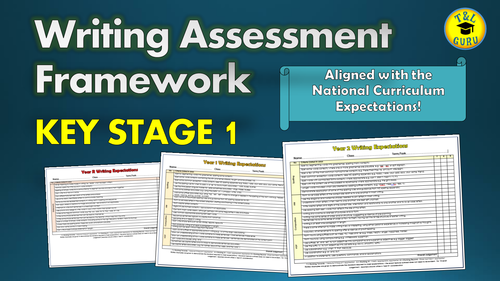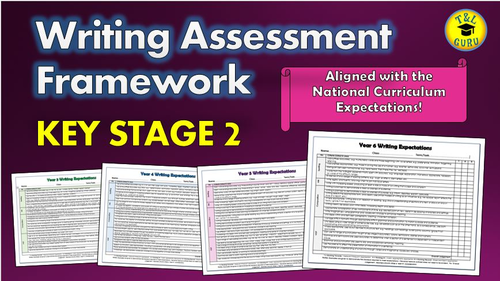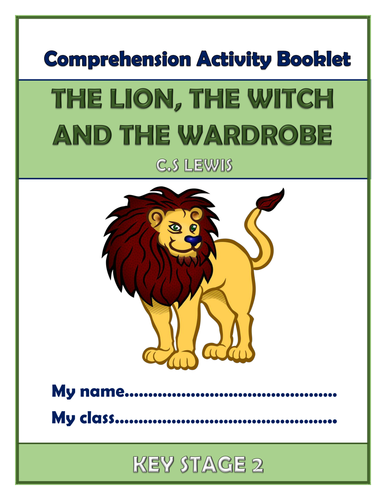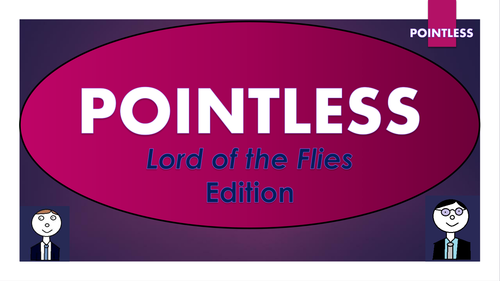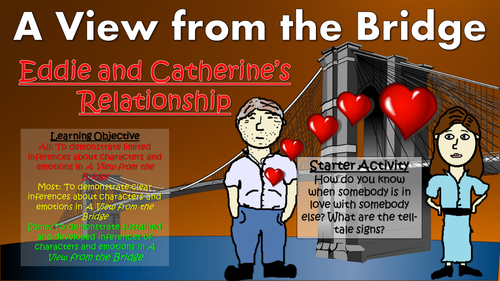
3k+Uploads
1911k+Views
2243k+Downloads
All resources

Blood Brothers - Linking the Play to Context
This engaging and interesting lesson enables students to demonstrate a clear and developed understanding of the historical context of Willy Russell’s Blood Brothers. In particular, students learn about the key social and historical events that took place in the UK in the 1970s and 80s (particularly around the play’s setting of Liverpool) and apply this understanding to characters and events in the play.
The lesson utilises a range of tasks, that require students to be both independent and collaborative learners. It follows this learning journey:
Considering and discussing ideas of class and class systems, both historically and in the present day;
Sequencing and understanding the key features of the social and historical context of the UK/Liverpool in the 1970s and 80s;
Using independent research to enhance their understanding of deeper contextual meanings;
Linking the key events of the play to social and historical context, analysing Russell’s key messages;
Taking part in a fun, interactive quiz in order to gauge their learning;
Self-evaluating their learning in the lesson.
Included in this resource pack are:
A well-presented, thorough, and informative, whole-lesson PowerPoint presentation;
Detailed cards for the sorting/timeline activity, presenting key contextual events;
A ‘Researching Context’ template, to help guide students’ research;
A template to help scaffold the main task, complete with quotes from the text;
A comprehensive teacher guidance form/lesson plan to assist delivery.
Resources are provided in both Word (for easy editing)and PDF (to prevent formatting issues between computers).
All images in this resource are licensed for commercial use, and are cited on the final slide of the lesson presentation.
Please note - the independent research activity (development task) in this resource pack requires students to have access to the internet.

The Woman in Black Knowledge Organiser/ Revision Mat!
This detailed and visually-appealing resource offers a complete reference point for students learning or revising Susan Hill’s ‘The Woman in Black.’ It contains comprehensive sections on:
Context;
Chapter by Chapter Summary (with quotes);
Main Characters;
Themes;
Hill’s Language Devices;
Features of Gothic Novels.
Key words and ideas are underlined for easy reference. The resource is designed to be printed onto A3, and is provided as both a PDF and a Word version (so that you can edit if you want to). All images used are licensed for commercial use and are cited on a separate document (included).

Blood Brothers - Mrs Johnstone and Mrs Lyons!
This engaging and interesting lesson enables students to make clear and developed interpretations of the characters of Mrs Johnstone and Mrs Lyons in Willy Russell’s Blood Brothers. In particular, students infer and interpret key information about the characters from their introductions into the play, before tracking how their characters develop through close analysis of key quotations.
The lesson utilises a range of tasks, that require students to be both independent and collaborative learners. It follows this learning journey:
Considering the meaning of the key term ‘stereotype’ and how Mrs Johnstone and Mrs Lyons represent stereotypes of social groups;
Engaging with the opening to the text and interpreting how Mrs Johnstone and Mrs Lyons are presented;
Tracking how the characters are developed throughout the play, through engagement with key quotations;
Answering an essay-style question about the introduction and development of the characters;
Self-evaluating their learning in the lesson.
Included in this resource pack are:
A well-presented, thorough, and informative, whole-lesson PowerPoint presentation;
Appropriate extracts from the play;
A worksheet with key quotations to enable students to track the development of characters;
A template to help scaffold the main task, complete with quotes from the text;
A comprehensive teacher guidance form/lesson plan to assist delivery.
Resources are provided in both Word (for easy editing)and PDF (to prevent formatting issues between computers).
All images in this resource are licensed for commercial use, and are cited on the final slide of the lesson presentation.

Dulce et Decorum est - Language Devices and Context
This is a fun, engaging, and highly informative lesson/set of tasks on Wilfred Owen's war poem 'Dulce et Decorum est. This has been taught during an observation lesson where the teacher received an Outstanding judgement.
It comes complete with:
- Engaging and visual PowerPoint to guide students (and teacher!) through the lesson;
- Colourful and thought-provoking worksheet for the main analysis task;
- Lesson plan/ teacher guidance sheet, which goes through the lesson step-by-step;
- Resources to enable the teacher to make 'flags' for the development task.
As well as building students' knowledge of the text, they also learn crucial analysis and speaking and listening skills, in addition to using and applying key terminology.
All pictures are licensed for commercial use, and image authors cited on the final slide.

Year 2 Spelling Patterns - Rules, Activities and Application Tasks!
These resources offer an original and efficient way to approaching the spelling expectations of the 2014 National Curriculum. They contain over 30 slides of spelling rules, 5-minute stand-alone activities, and application tasks to apply spelling patterns to more extended writing opportunities.
This year 2 pack provides comprehensive and varied tasks for approaching spelling rules, such as:
- The /s/ sound spelt with a c before e, i ,and y;
- The /dʒ/ sound at the end of words;
- The /n/ sound at the beginning of words, sometimes spelt kn and gn;
- The /r/ sound at the beginning of words, sometimes spelt wr;
- The /l/ or /əl/ sound at the end of words, spelt le, el, or al;
- The plural of nouns ending /y/, replaced with ies;
- Common homophones;
- Suffixes;
- Apostrophes for possession and omission;
- The year 2 common exception words.
All images used are licensed for commercial use, and are cited on the final slide of the presentation.

Do not go gentle into that good night Comprehension Activities Booklet!
This 16-page resource booklet contains a wide range of challenging and engaging comprehension activities for use throughout the reading of Dylan Thomas’ poem 'Do not go gentle into that good night.’ They are perfect for aiding the progress of students learning poetry either in KS3 and KS4 in preparation for poetry/unseen poetry at GCSE, as the tasks draw on English Literature assessment objectives - suitable for all examining bodies - it is clearly highlighted within each task regarding which assessment strands the task is designed to demonstrate.
The booklet is provided in both Word (to allow for easy editing) and PDF (to ensure for consistency of formatting between computers).
Activities within the booklet include (amongst many others):
‘Analysing Context’ - helping students to ‘Show understanding of the relationships between texts and the contexts in which they were written.’
‘Analysing Subject Matter, Language and Structure’ - to help students to ‘Analyse the language, form and structure used by a writer to create meanings and effects, using relevant subject terminology where appropriate.’
‘Diary Entry’ - to help students to ‘Use a range of vocabulary and sentence structures for clarity, purpose and effect, with accurate spelling and punctuation. Make an informed personal response, recognising that other responses to a text are possible and evaluating these.’
‘The Speaker’ - to help students to ‘Read, understand and respond to texts. Students should be able to: maintain a critical style and develop an informed personal response use textual references, including quotations, to support and illustrate interpretations.’

On My First Sonne - Ben Jonson - Comprehension Activities Booklet!
This 16-page resource booklet contains a wide range of challenging and engaging comprehension activities for use throughout the reading of Ben Jonson’s tender elegy 'On My First Sonne.’ They are perfect for aiding the progress of students learning poetry either in KS3 and KS4 in preparation for poetry/unseen poetry at GCSE, as the tasks draw on English Literature assessment objectives - suitable for all examining bodies - it is clearly highlighted within each task regarding which assessment strands the task is designed to demonstrate.
The booklet is provided in both Word (to allow for easy editing) and PDF (to ensure for consistency of formatting between computers).
Activities within the booklet include (amongst many others):
‘Analysing Context’ - helping students to ‘Show understanding of the relationships between texts and the contexts in which they were written.’
‘Analysing Subject Matter, Language and Structure’ - to help students to ‘Analyse the language, form and structure used by a writer to create meanings and effects, using relevant subject terminology where appropriate.’
‘Diary Entry’ - to help students to ‘Use a range of vocabulary and sentence structures for clarity, purpose and effect, with accurate spelling and punctuation. Make an informed personal response, recognising that other responses to a text are possible and evaluating these.’
‘The Speaker’ - to help students to ‘Read, understand and respond to texts. Students should be able to: maintain a critical style and develop an informed personal response use textual references, including quotations, to support and illustrate interpretations.’

The Falling Leaves - Comprehension Activities Booklet!
This 16-page resource booklet contains a wide range of challenging and engaging comprehension activities for use throughout the reading of Margaret Postgate Cole’s war poem 'The Falling Leaves.’ They are perfect for aiding the progress of students learning poetry either in KS3 and KS4 in preparation for poetry/unseen poetry at GCSE, as the tasks draw on English Literature assessment objectives - suitable for all examining bodies - it is clearly highlighted within each task regarding which assessment strands the task is designed to demonstrate.
The booklet is provided in both Word (to allow for easy editing) and PDF (to ensure for consistency of formatting between computers).
Activities within the booklet include (amongst many others):
‘Analysing Context’ - helping students to ‘Show understanding of the relationships between texts and the contexts in which they were written.’
‘Analysing Subject Matter, Language and Structure’ - to help students to ‘Analyse the language, form and structure used by a writer to create meanings and effects, using relevant subject terminology where appropriate.’
‘Diary Entry’ - to help students to ‘Use a range of vocabulary and sentence structures for clarity, purpose and effect, with accurate spelling and punctuation. Make an informed personal response, recognising that other responses to a text are possible and evaluating these.’
‘The Speaker’ - to help students to ‘Read, understand and respond to texts. Students should be able to: maintain a critical style and develop an informed personal response use textual references, including quotations, to support and illustrate interpretations.’

Skellig - The Derelict Garage!
This engaging and informative lesson helps students to identify and analyse the descriptive language techniques used by David Almond to describe the derelict garage in Skellig, before creating their own descriptive language techniques to describe an old and run-down setting.
The lesson follows a step-by-step learning journey, in which children learn through:
- Defining and exemplifying the key descriptive techniques through a group activity;
- Reading and comprehending an extract from Skellig, in which Michael's old and run-down garage is described;
- Identifying the descriptive techniques within the extract and analysing their effectiveness;
- Learning how to create effective and imaginative adjectives, verbs, similes, metaphors, and personification;
- Creating their own device-filled descriptions of an old and decrepit place;
- Peer assessing each other's learning attempts;
Included is:
- Whole lesson PowerPoint - colourful and comprehensive;
- Word Bank template (pdf and word);
- Selected extract - Skellig - Michael's Garage;
- 'Create Your Own Personification' worksheet (pdf and word);
- Cards for the card-sorting activity;
- Comprehensive lesson plan.
There are also opportunities for group learning, speaking and listening, peer assessment, and whole class discussion. I originally used these resources with a year 7 class, however colleagues have used them for between years 4 and 9 with minimal adaptations.
All images are licensed for commercial use, and image rights are listed on the last page of the presentation.

Stone Cold Knowledge Organiser/ Revision Mat!
This detailed and visually-appealing resource offers a complete reference point for students learning or revising Robert Swindell's 'Stone Cold.' It contains comprehensive sections on:
- Context;
- Chapter by Chapter Summary (with quotes);
- Main Characters;
- Themes;
- Swindell's Language Devices;
- Features of Thriller Novels.
Key words and ideas are underlined for easy reference. The resource is designed to be printed onto A3, and is provided as both a PDF and a Word version (so that you can edit if you want to). All images used are licensed for commercial use and are cited on a separate document (included).

Writing Assessment Framework - Primary KS1 & KS2 - Aligned with the National Curriculum Expectations
This writing assessment framework has been designed to allow to teachers to accurately assess student attainment against the writing expectations within the new National Curriculum. They are perfect for use when gauging the standard of extended writing pieces. These are to be used when assessing writing throughout Primary, from Years R-6, progressing towards the end of Key Stage 1 and Key Stage 2 expectations.
The expectations for each year group are split into four subcategories: Spelling, Handwriting, Composition, and VGP (Vocabulary, Grammar, and Punctuation). Within each subcategory are statements relating to the expectations for the year group. Teachers simply mark the extent to which the statement has been achieved (utilising the key at the bottom of the page) and then use best fit to determine the overall standard of the writing.
In addition to the Word documents (allowing you to edit if you need to), I've also added the documents as a PDF, in case the formatting differs on your computer.

Writing Assessment Framework - KS1 - Aligned with the National Curriculum Expectations!
This writing assessment framework has been designed to allow to teachers to accurately assess student attainment against the writing expectations within the new National Curriculum. They are perfect for use when gauging the standard of extended writing pieces. These are to be used when assessing writing for Years R-2, progressing towards the end of Key Stage 1 expectations.
The expectations for each year group are split into four subcategories: Spelling, Handwriting, Composition, and VGP (Vocabulary, Grammar, and Punctuation). Within each subcategory are statements relating to the expectations for the year group. Teachers simply mark the extent to which the statement has been achieved (utilising the key at the bottom of the page) and then use best fit to determine the overall standard of the writing.
In addition to the Word documents (allowing you to edit if you need to) I've also added the documents as a PDF, in case the formatting differs on your computer.

Writing Assessment Framework - KS2 - Aligned with the National Curriculum Expectations!
This writing assessment framework has been designed to allow to teachers to accurately assess student attainment against the writing expectations of the new National Curriculum. They are perfect for use when gauging the standard of extended writing pieces. These are to be used when assessing writing for Years 3-6, progressing towards the end of Key Stage 2 expectations.
The expectations for each year group are split into four subcategories: Spelling, Handwriting, Composition, and VGP (Vocabulary, Grammar, and Punctuation). Within each subcategory are statements relating to the expectations for the year group. Teachers simply mark the extent to which the statement has been achieved (utilising the key at the bottom of the page) and then use best fit to determine the overall standard of the writing.
In addition to the Word documents (allowing you to edit if you need to) I've also added the documents as a PDF, in case the formatting differs on your computer.

The Lion, The Witch, and The Wardrobe KS2 Comprehension Activities Booklet!
This resource booklet contains a wide range of age-appropriate, engaging, and meaningful comprehension activities for use throughout the reading of C.S Lewis's 'The Lion, The Witch, and The Wardrobe.' Teachers have found them particularly useful in comprehension or guided reading sessions. They are perfect for aiding the progress of children towards meeting the upper KS2 expectations within the new National Curriculum framework. Children love learning from these resources, whilst they are also of great use to teachers, as there is explicit information within each task regarding which comprehension strands the task is designed to demonstrate. They also relate to key extracts, characters, and themes from the story, ensuring that children gain a deep understanding of the text.
Activities within the booklet include:
- 'An Interview with Peter' - to enable students to demonstrate that they can: 'Understand what is read by drawing on information from more than one paragraph, identifying key details that support the main ideas, and using quotations for illustration;'
- 'Lewis's Description' - to enable students to demonstrate that they can: 'Explain meanings of words that they know and ask the meaning of new words. Link the meaning of new words to words that they already know;'
- 'Aslan' - to enable students to demonstrate that they can: 'Understand what is read by drawing on information from more than one paragraph, identifying key details that support the main ideas, and using quotations for illustration;'
- 'Figurative Language in The Lion, The Witch, and The Wardrobe' - to enable students to demonstrate that they can: 'Discuss and evaluate how authors use language, including figurative language, to create an impact on the reader.'
Plus many, many more activities (the booklet is 21 pages in length!) I've also added it as a PDF in case the formatting differs on your computer.
All images are licensed for commercial use, and are cited on a separate document (included).

A Series of Unfortunate Events - The Bad Beginning - KS2 Comprehension Activities Booklet!
This resource booklet contains a wide range of age-appropriate, engaging, and meaningful comprehension activities for use throughout the reading of Lemony Snicket's 'A Series of Unfortunate Events - The Bad Beginning.' Teachers have found them particularly useful in comprehension or guided reading sessions. They are perfect for aiding the progress of children towards meeting the upper KS2 expectations within the new National Curriculum framework. Children love learning from these resources, whilst they are also of great use to teachers, as there is explicit information within each task regarding which comprehension strands the task is designed to demonstrate. They also relate to key extracts, characters, and themes from the story, ensuring that children gain a deep understanding of the text.
Activities within the booklet include:
- 'An Interview with Violet' - to enable students to demonstrate that they can: 'Understand what is read by drawing on information from more than one paragraph, identifying key details that support the main ideas, and using quotations for illustration;'
- 'Snicket's Description' - to enable students to demonstrate that they can: 'Explain meanings of words that they know and ask the meaning of new words. Link the meaning of new words to words that they already know;'
- 'Count Olaf' - to enable students to demonstrate that they can: 'Understand what is read by drawing on information from more than one paragraph, identifying key details that support the main ideas, and using quotations for illustration;'
- 'Figurative Language in 'A Series of Unfortunate Events' - to enable students to demonstrate that they can: 'Discuss and evaluate how authors use language, including figurative language, to create an impact on the reader.'
Plus many, many more activities (the booklet is 21 pages in length!) I've also added it as a PDF in case the formatting differs on your computer.
All images are licensed for commercial use, and are cited on a separate document (included).

Lord of the Flies Pointless Game! (and blank template to make your own games!)
Based on the popular game show 'Pointless', this resource is perfect for use as a whole lesson resource, enrichment option, or revision tool. Editable, so that you can change to any other topic or change questions. (I've also added a blank template so that you can make your own games from scratch). Containing almost 30 slides of sound clips, engaging visuals, and suitably challenging questions, this resource is effective at both promoting engagement and enhancing learning. There are several full rounds of questions to build or revisit knowledge of characters, plot, and themes in 'Lord of the Flies:'
Round 1. The characters in Lord of the Flies (takes approx 10 mins)
Round 2. Quotations from the text (takes approx 15 mins)
3. Settings, themes, and objects (takes approx 15 mins)
4. Themes in Lord of the Flies (takes approx 10 mins)
The nature of this game ensures that the resource can challenge students of all levels.

A View from the Bridge: Miller's Language Devices!
This interesting and highly-stimulating lesson enables students to demonstrate a developed, sustained understanding of the language devices utilised in Arthur Miller’s A View from the Bridge. In particular, students engage analytically with Miller’s use of language at the beginning of Act II, in which Eddie Carbone appears to lose control over his actions. Students examine how similes, rhetorical questions, imperative commands, and other language features serve to highlight his descent into desperation.
The lesson follows a clear, logical, bite-size learning journey, which guides students towards differentiated learning objectives. Over the course of this journey, they become able to:
- Define and provide examples for each of the relevant language devices;
- Identify each of the language devices in short sentences, and begin to comment upon their effect;
- Understand some of Miller's intentions behind writing the play;
- Critically engage with Miller's use of language devices at the end of the Act Two, including the events leading up to Eddie's call to the Immigration Office;
-Peer assess each other's learning attempts.
This resource pack includes:
- A visually engaging whole-lesson PowerPoint presentation;;
- Paper copies and online links to the extract needed for the lesson (beginning section of Act Two);
- Language Devices Cards;
- Language Devices worksheet (including answer sheet for teachers);
- A logically scaffolded essay template;
- A detailed lesson plan, complete with what the teacher and students should aim to achieve at each stage of the lesson.
All images are licensed for commercial use, and are cited on the final slide of the PowerPoint.

A View from the Bridge: The Lifting of the Chair Scene! (Exploring Miller's dramatic devices)
This interesting and highly-stimulating lesson enables students to demonstrate a developed, sustained understanding of the dramatic devices utilised in the ‘lifting of the chair’ scene in Arthur Miller’s A View from the Bridge. In particular, students engage analytically with Miller’s use of atmosphere, dramatic tension, dramatic irony, and stage directions throughout the scene.
The lesson follows a clear, logical, bite-size learning journey, which guides students towards differentiated learning objectives. Over the course of this journey, they become able to:
- Understand the key term 'masculinity' and how it affects the behaviour of different characters;
- Read and understand the chair-lifting scene at the end of Act One, making key interpretations and inferences;
- Define and understand the dramatic devices: dramatic devices, dramatic irony, atmosphere, and stage directions.
- Critically engage with Miller's use of dramatic devices at the end of the Act One, including the events leading up to the chair lifting section.
-Peer assess each other's learning attempts.
This resource pack includes:
- A visually engaging whole-lesson PowerPoint presentation;;
- Paper copies and online links to the extract needed for the lesson (end section of Act One);
- Dramatic Devices Cards;
- Dramatic Devices worksheet (including answer sheet for teachers);
- A logically scaffolded essay template;
- A detailed lesson plan, complete with what the teacher and students should aim to achieve at each stage of the lesson.
All images are licensed for commercial use, and are cited on the final slide of the PowerPoint.

A View from the Bridge: Eddie and Catherine's Relationship
This interesting and highly-stimulating enables students to make clear and sustained inferences regarding the main characters and their relationships in Arthur Miller’s A View from the Bridge. In particular, students read between the lines in decoding the subtle cues suggestive of Eddie’s feelings towards Catherine in the opening stages of Act I.
The lesson follows a clear, logical, bite-size learning journey, which guides students towards differentiated learning objectives. Over the course of this journey, they become able to:
- Understand the key learning skill of inference;
-Infer key meanings from short extracts of texts;
- Read and understand the opening section of Act I, in which we are introduced to the Carbone family, and infer and interpret the key information provided regarding their relationships;
- Demonstrate an understanding of Eddie's hidden feelings for Catherine, and Beatrice's knowledge of this;
- Write an emotive diary entry from Beatrice's viewpoint, using evidence from the text to demonstrate an understanding the key meanings from the act;
-Peer assess each other's learning attempts.
This resource pack includes:
- A visually engaging whole-lesson PowerPoint presentation;;
- Paper copies and online links to the extract needed for the lesson (Beginning of Act I);
- Inferences worksheet (including answer sheet for teachers);
- A detailed lesson plan, complete with what the teacher and students should aim to achieve at each stage of the lesson.
All images are licensed for commercial use, and are cited on the final slide of the PowerPoint.

A View from the Bridge: Greek Tragedy - Eddie's Downfall!
This interesting and highly-stimulating lesson students to demonstrate a developed, sustained understanding of the structural features of the Greek Tragedy which are utilised in Arthur Miller’s A View from the Bridge. In particular, students engage analytically with Eddie’s ‘hamartia’ and catastrophic downfall at the end of Act II. Students examine how Eddie’s role as a tragic hero, his fatal flaw, and the sense of fate which runs throughout, mirrors the features of Greek Tragedies.
The lesson follows a clear, logical, bite-size learning journey, which guides students towards differentiated learning objectives. Over the course of this journey, they become able to:
- Define and identify the features of Greek Tragedies;
- Understand Miller's views towards Greek Tragedies, and his intentions for writing the play in this form;
- Identify the features of Greek Tragedy in A View from the Bridge;
- Critically engage with text as a Greek Tragedy, considering how Eddie's downfall is constructed by his fatal flaws, hamartia, and catastrophe;
-Peer assess each other's learning attempts.
This resource pack includes:
- A visually engaging whole-lesson PowerPoint presentation;;
- Paper copies and online links to the extract needed for the lesson (end section of Act Two);
- Greek Myths Definitions Cards;
- Greek Myths worksheet (including answer sheet for teachers);
- A logically scaffolded essay template;
- A detailed lesson plan, complete with what the teacher and students should aim to achieve at each stage of the lesson.
All images are licensed for commercial use, and are cited on the final slide of the PowerPoint.


